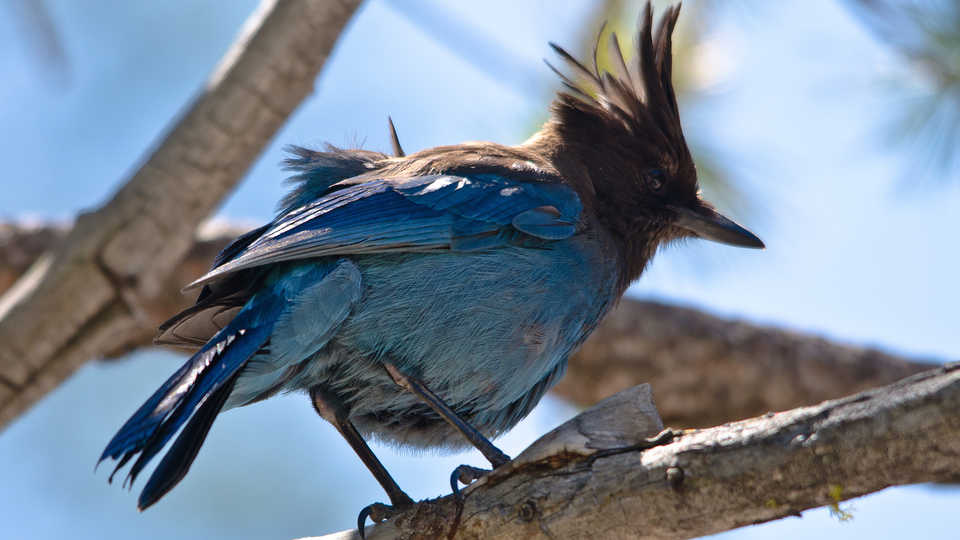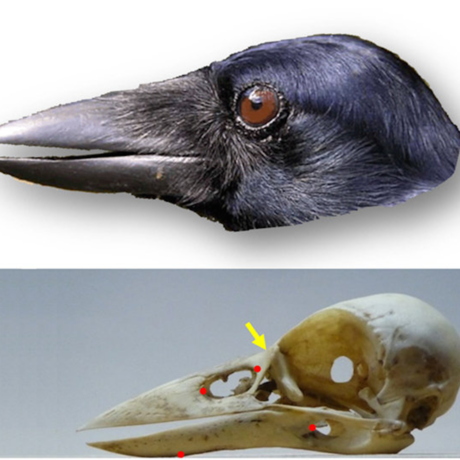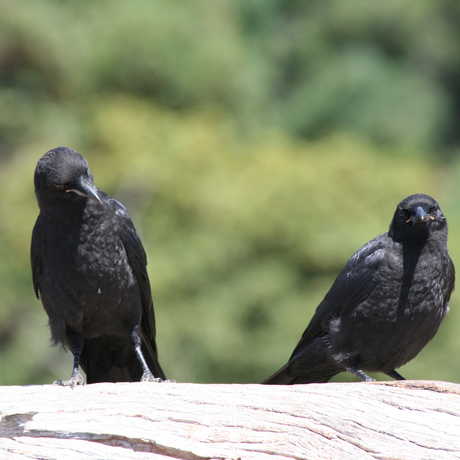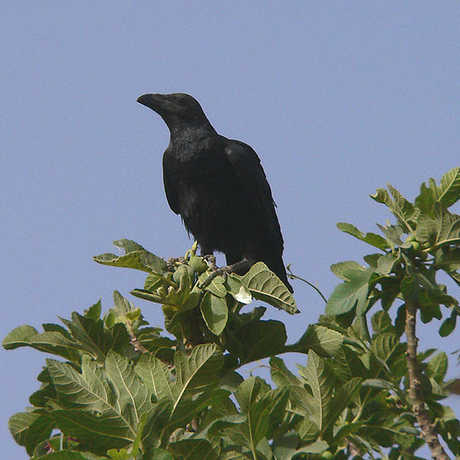Science News
Opportunistic Steller’s Jay

While we often write about crows and ravens for Corvid Week, the family contains many other species. We can’t overlook colorful and noisy jays, and a recent study that focuses on Steller’s jays (Cyanocitta stelleri) demonstrates that these birds are just as intelligent, resourceful, and trouble-making as their larger, darker, more spotlight-grabbing kin.
Steller’s jays are found in forested and mountainous areas in the west and enjoy a mainstay diet of insects, seeds, nuts, and berries. But they also find tastier treats—eggs and young birds of other species, and perhaps most enjoyable and easy to find, human food. In fact, research has found that the jays’ populations soar where human activity is prevalent in forested areas, such as national parks and campgrounds.
Inspired by the noted increase in abundance of Steller’s jays at camp sites, researchers wondered how campgrounds influence the behaviors of the individual birds.So, in 2010 and 2011, scientists tagged several jays in California’s Redwood National and State Parks, both inside the campgrounds and in more remote areas. The team found no differences in the home range size of the campground birds and more remote birds. Some of the campground birds “commuted” to their campgrounds, finding food in open fire pits, dishwashing areas, garbage cans, and a few direct feedings; other campground jays nested very close to the sites. All of the campground birds are good at hiding and hoarding their human food stashes in nearby trees.
The team did find that the campground birds were less territorial and spent less time foraging, inferring that the easy access to human food might be the cause. In addition, in contrast to the more remote birds, the campground jays spent more time near the ground instead of up in the trees.
This might be good news for other bird species, the researchers say. A federally threatened seabird, the marbled murrelet (Brachyramphus marmoratus), nests in the highest canopy old-growth redwood forest, and jays are known to eat murrelet eggs when they encounter their nests. John Marzluff, an expert on corvid behavior, who wasn’t involved in the study says, “Though Steller’s jays still pose a serious threat to sensitive species that nest well above ground, such as the marbled murrelet, their use of anthropogenic foods that occur most frequently at ground level in camps may reduce chance encounters between jays and murrelets within the camp proper.”
The jays’ intelligence was one of the many challenges that faced the research team. “Working with Steller’s jays in campgrounds really keeps you on your toes. Individual jays were quick to learn our trapping techniques and would avoid any traps that they had previously experienced,” says study lead author Will Goldenberg. “In addition, our study sites contained the tallest trees on the planet and more above ground biomass than any other forest, making our radio tracking efforts an extreme challenge.”
Want to learn more about jays? Here’s a recent story about how blue jays and their relatives help plant trees.
Image: Max Braun/Wikipedia


